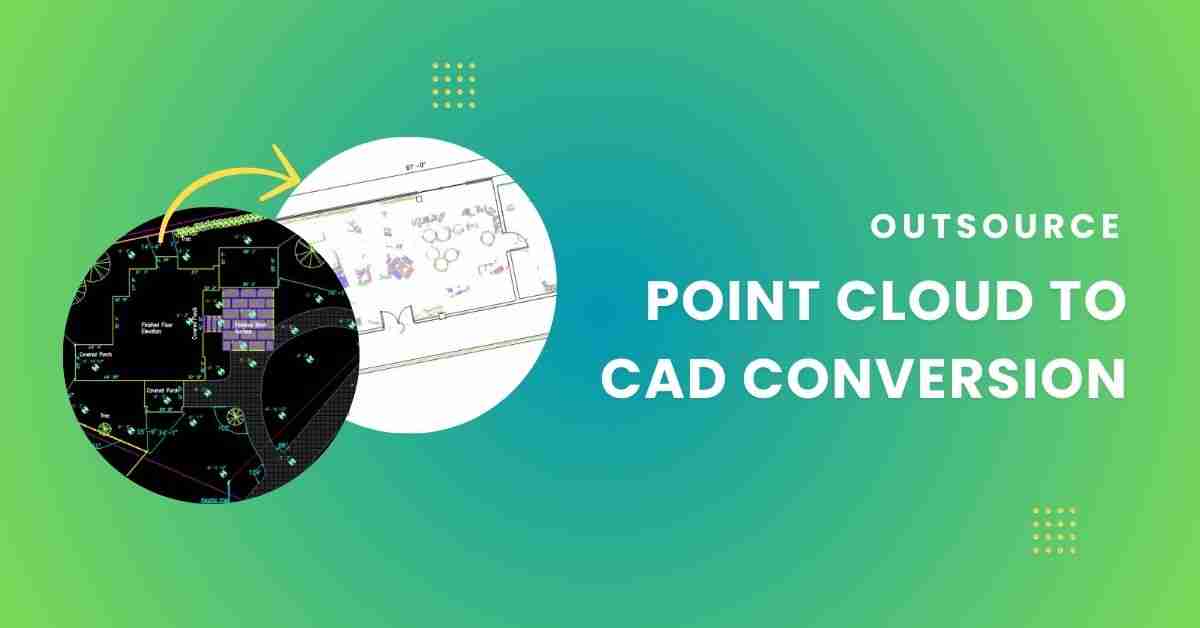
Introduction
In today’s rapidly advancing technological landscape, architecture, engineering, and construction industries are increasingly turning to 3D scanning technology for accurate and efficient data capture.
Point cloud to CAD conversion, also known as 3D scan to AutoCAD conversion, is a process that involves converting raw point cloud data captured from 3D scans into usable AutoCAD drawings.
This conversion enables professionals to utilize the rich data from 3D scans in CAD software for various design, analysis, and visualization purposes. While some businesses may consider performing Point Cloud to CAD Conversion in-house, outsourcing this task to specialized service providers offers numerous advantages.
Reasons to Outsource Point Cloud to CAD Conversion
Here are five critical reasons why outsourcing point cloud to CAD conversion can be beneficial for your organization:
Expertise and Specialization
Outsourcing point cloud to CAD conversion allows you to leverage the knowledge and specialization of professionals who are experienced in handling complex 3D data and CAD software.
These specialized service providers have the knowledge, skills, and resources required to accurately process point cloud data and create precise CAD drawings.
Time and Cost Efficiency
By outsourcing point cloud to CAD conversion, you can save valuable time and resources that would otherwise be spent on training internal staff and investing in expensive software and equipment.
Outsourcing eliminates the need for extensive training and allows you to focus on your core business activities, leading to increased productivity and cost savings in the long run.
Scalability and Flexibility
Outsourcing 3d point cloud to CAD conversion provides scalability and flexibility to accommodate fluctuating project requirements and deadlines.
Whether you have a small-scale project or a large-scale undertaking, outsourcing allows you to scale up or down quickly and efficiently without the need to hire additional staff or invest in additional infrastructure.
Maintaining High Standards
Professional outsourcing firms adhere to strict quality control measures and standards to ensure the accuracy and reliability of the CAD drawings generated from point cloud data.
The BIM outsourcing companies employ quality assurance processes, including thorough validation and verification procedures, to deliver high-quality 3d scan to CAD drawings that meet your specifications and standards.
Prioritizing Core Skills
Outsourcing 3D Scan to CAD Conversion Services enables you to focus on your core competencies and strategic objectives without being bogged down by the intricacies of data processing and CAD modeling.
By entrusting this task to external experts, you can streamline your workflow, improve project efficiency, and achieve better overall results.
Conclusion
In conclusion, outsourcing point cloud to CAD conversion offers numerous benefits for businesses across various industries. From leveraging expertise and specialization to achieving time and cost efficiency, outsourcing allows organizations to optimize their workflow and maximize their resources.
By partnering with experienced outsourcing firms, businesses can ensure the accuracy, reliability, and quality of CAD models generated from point cloud data while freeing up internal resources to focus on core activities and strategic initiatives.
Additionally, outsourcing provides scalability, flexibility, and access to state-of-the-art technology and infrastructure, allowing organizations to adapt to changing project requirements and market demands.
As industries continue to embrace 3D scanning technology for data capture and visualization, outsourcing 3d scan to CAD conversion emerges as a practical and cost-effective solution for unlocking the full potential of 3D data in CAD software. Embrace the advantages of outsourcing and elevate your organization’s capabilities in the digital age.
TO read more useful blogs, visit a4everyone